Nikolaus Stör & Peter Flötner
Burkard Waldis' Ursprung und Herkummen
Der Zwolf Ersten Alten König und Fürsten Deutscher Nation
"Origin and Provenance of The First Twelve Old Kings and Monarchs of the German Nation"
[HOME]
[POPULAR RETELLINGS]
|
BOOKS ILLUSTRATED BY PETER FLÖTNER.
A.—In The Department of Prints And Drawings. |
|
1. [WALDIS.] Ursprung und Herkummen der zwo1f ersten alten König und Fürsten Deutscher Nation, wie und zu welchen zeytten jr yeder Regiert hat. M.d.xliii. Hans Guldenmund the Elder, Nuremberg, 1543; fol. On the title-page above the date, the imperial eagle between the pillars of Hercules. In the text, twelve early German kings by Flotner, Reimers 19-30 [c. 280 x 180], each occupying the verso of a leaf, while the descriptive verses are printed on the recto of the leaf following. (1) A ii v. Tuiscon, aller Deutschen Vater [Tuisco, Father of the Germans]. Signed below 1. with mallet and chisel and initials PF. (this corner is mutilated in the present copy). B. is, 162,1. Bepr. Beimers, p. 39; Domanig, p. 13. (2) A iii v. Mannu, der Erst Deutsche Konig, [Mannus, the First German King]. (3) A iv v. Wygewon, Konig der nidern Deutschen. (4) B i v. Heriwon, Konig der mittel Deutschen. A free imitation of Burgkmair's David (in B. 66). (5) B ii v. Eusterwon, Konig der obern Dentschen. (6) B iii v. Marsus, König im Niderlandt. (7) B iv v. Gambriuius, Konig in Brabant, Flandern. Repr. Domanig, p. 14. (8) C i v. Suevus, ein Anherr aller Swaben. Below a landscape with farmbuildings and a man ploughing with a team of horses. Bepr. Domanig, p. 15. (9) C ii v. Wandalus, der Wenden Konig, [Vandalus, King of the Wends]. Landscape background. Bepr. Domanig, p. 16. (10) C iii T. Ariouistus ein König aller Deutschen. Copied in reverse from Burgkmair's King Arthur (in B. 64), with the game arms. (11) C iy v. Arminius, ein Furst zu Sachssen [Arminius-Herman, a Prince of the Saxons]. The body of Varus lies prone on the ground, and Arminius holds the severed head. Repr. Domanig, p. 17. (12) D i v. Carolus Magnus der erst Deutsche Keyser [Charlemagne, the First German Kaiser]. A copy in the same direction of Burgkmair's Ctosar Carolus (in B. 64). A good copy of the book, which is rare; the woodcuts are not coloured. Purchased from Herr Gutekunst, 1874. O. Milchsack has described two variants of this edition, both represented in the Wulfenbüttol library. The readiest criterion by which they may be distinguished is the date on the title-page, under the eagle. A has M.d. XLffl., B 1513. This copy and another in the Department of Printed Books, with the woodcuts coloured, belong to edition A, which also occurs at Berlin. Edition B occurs in the Allerh. Privati und Fideicommissbibliothek at Vienna. Copies of some of the cuts occur in Lazius, ''De gentium aliquot migratlonibus." 1537. A free repetition of the cycle, in the form of silver reliefs, by Flötner himself, is in the imperial collection at Vienna. (See Domanig, pp. 11-19.) D. argues that the woodcuts must have been finished long before 1543. because the figure of Wandalus recurs, with alterations, as Attila on leaf 11 of the "Hungern Chronica," 1534; but the resemblance seems to me much too slight to warrant any such conclusion. Beimers, Schmidt and Domauig attribute the whole series to Flötner, while Lange recognises only four woodcuts, nos. 1, 8, 9 and 11, which agree with the reliefs, as his work. |
I. Tuisco, The Father of All
Germans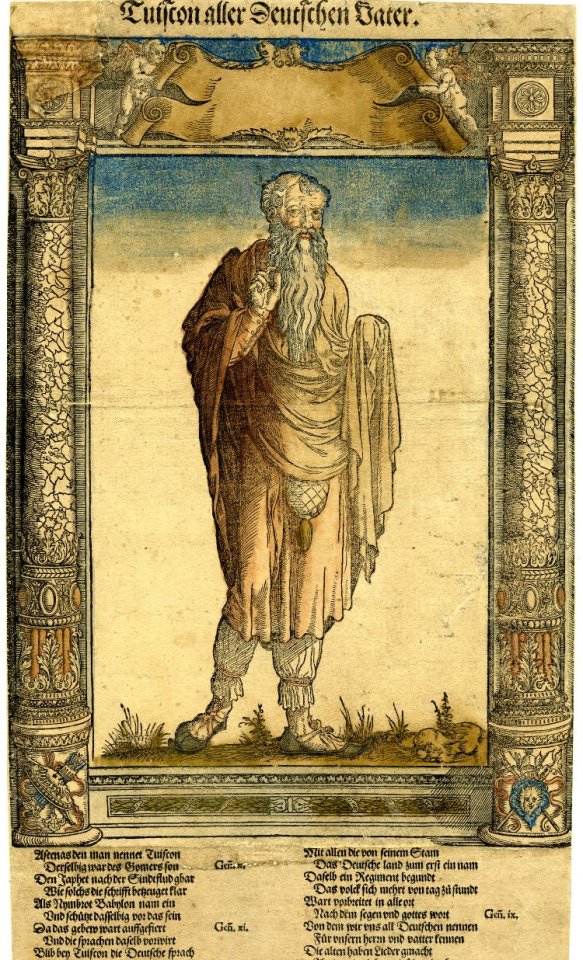  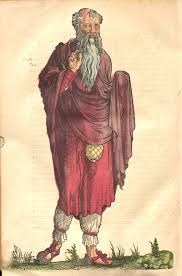 1572 Wolfgang Lazius De aliquot gentium migrationibus Tuisco 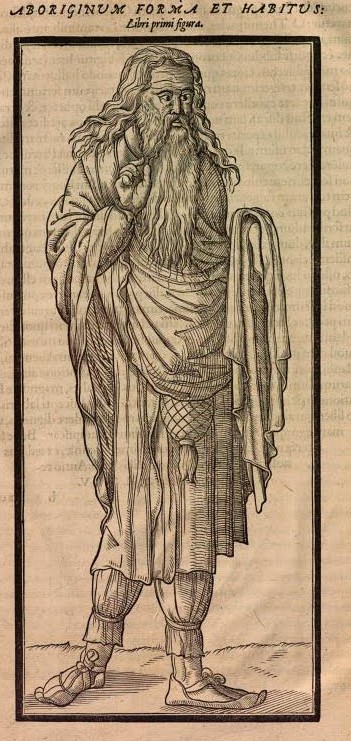  |
|
II. Mannus, The First German King 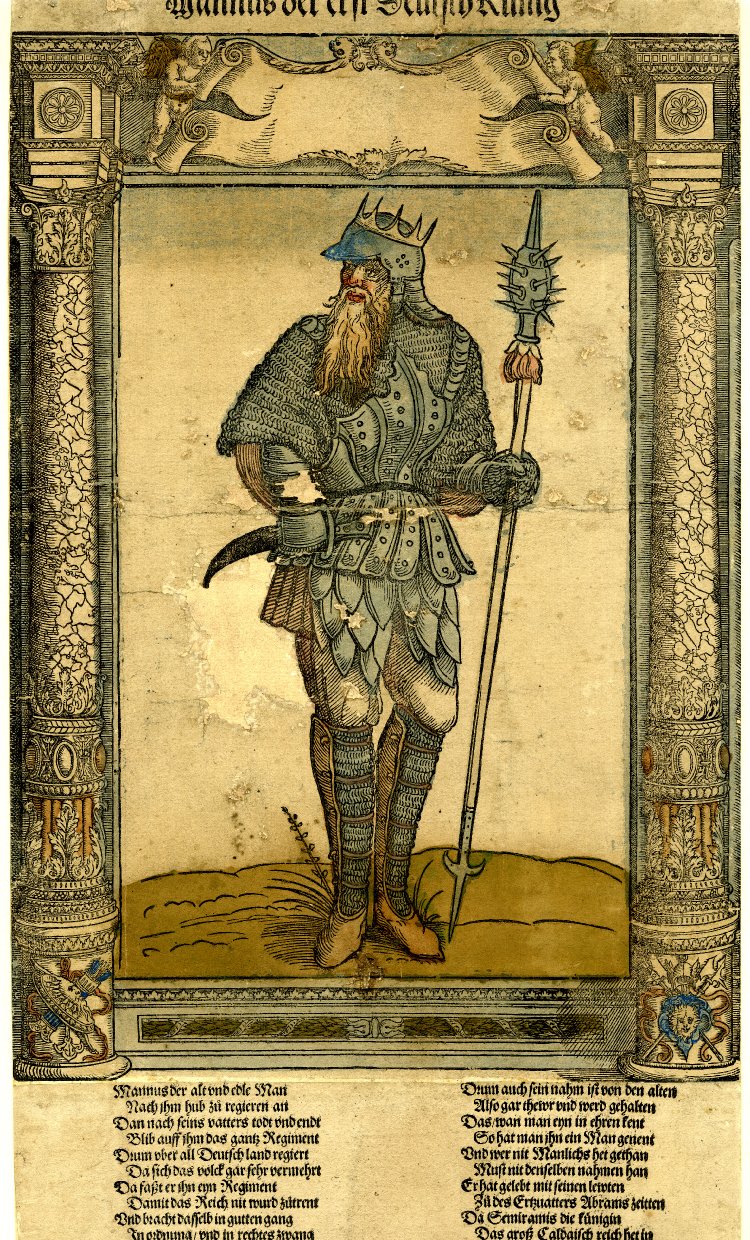 |
III. Wygewon, King of the Low Germans 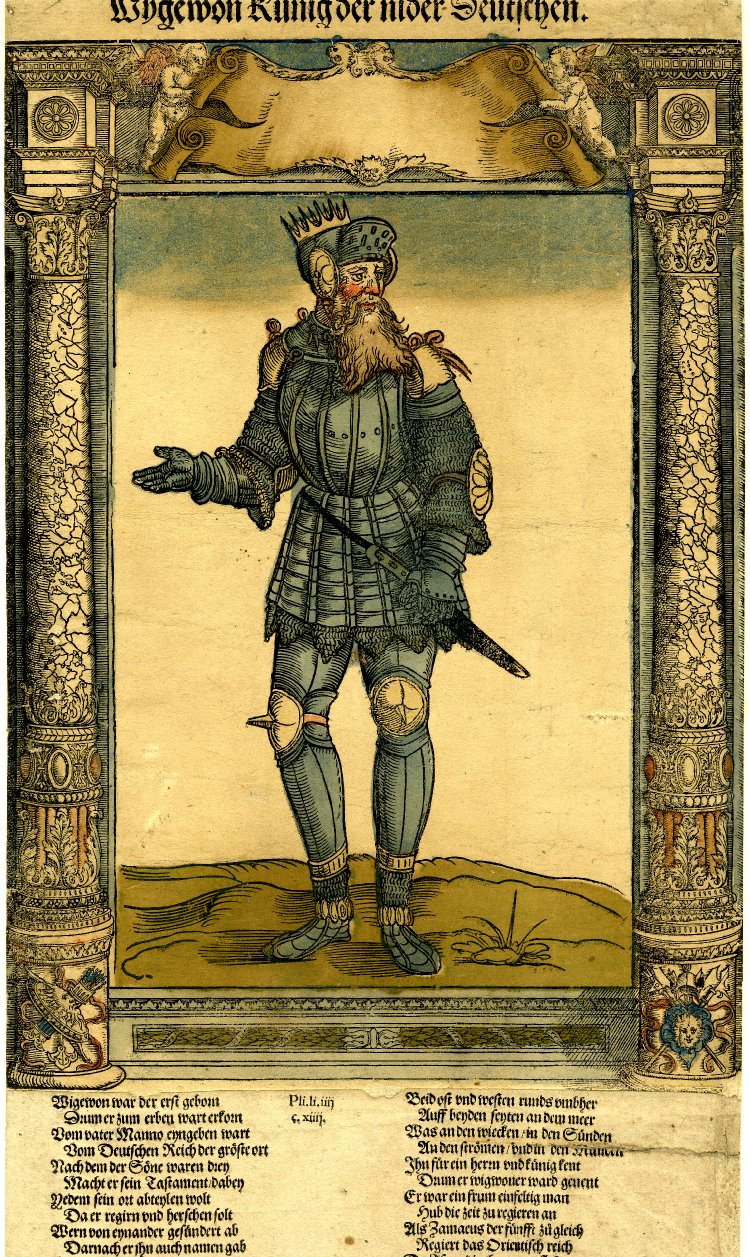 IV. Heriwon, King of the Middle Germans 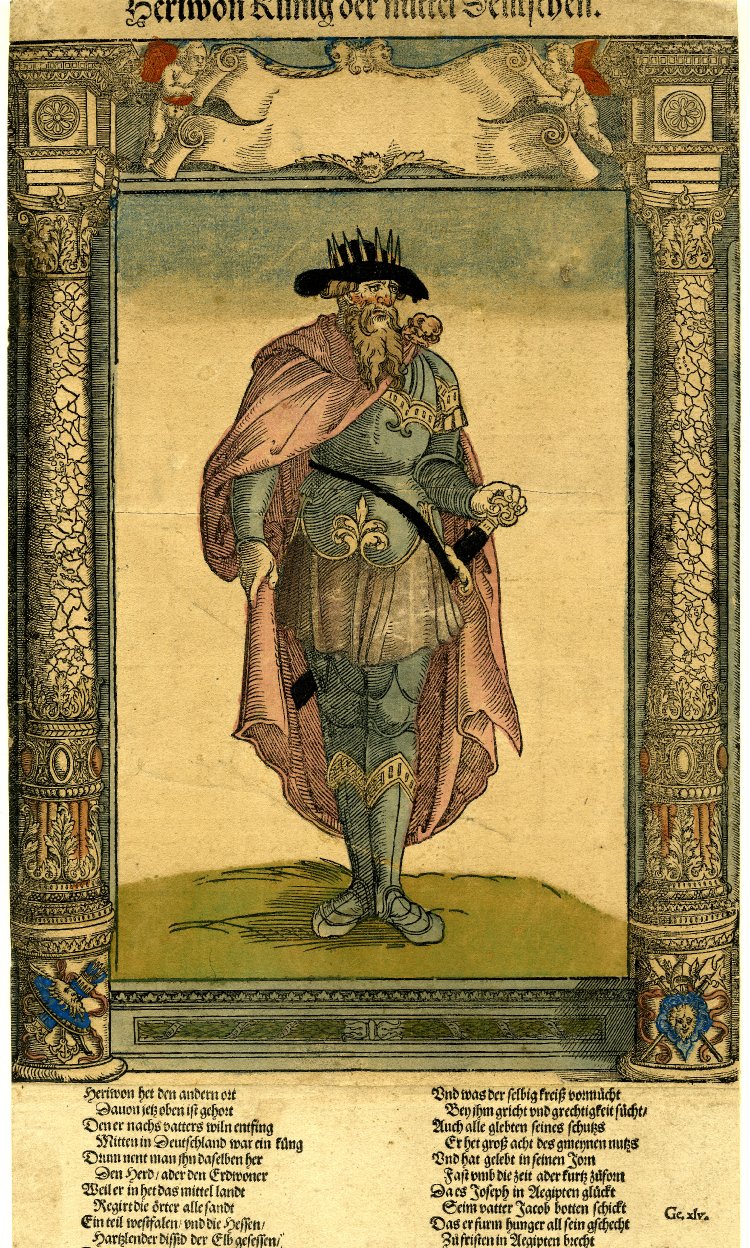 V. Eusterwon, King of the High Germans 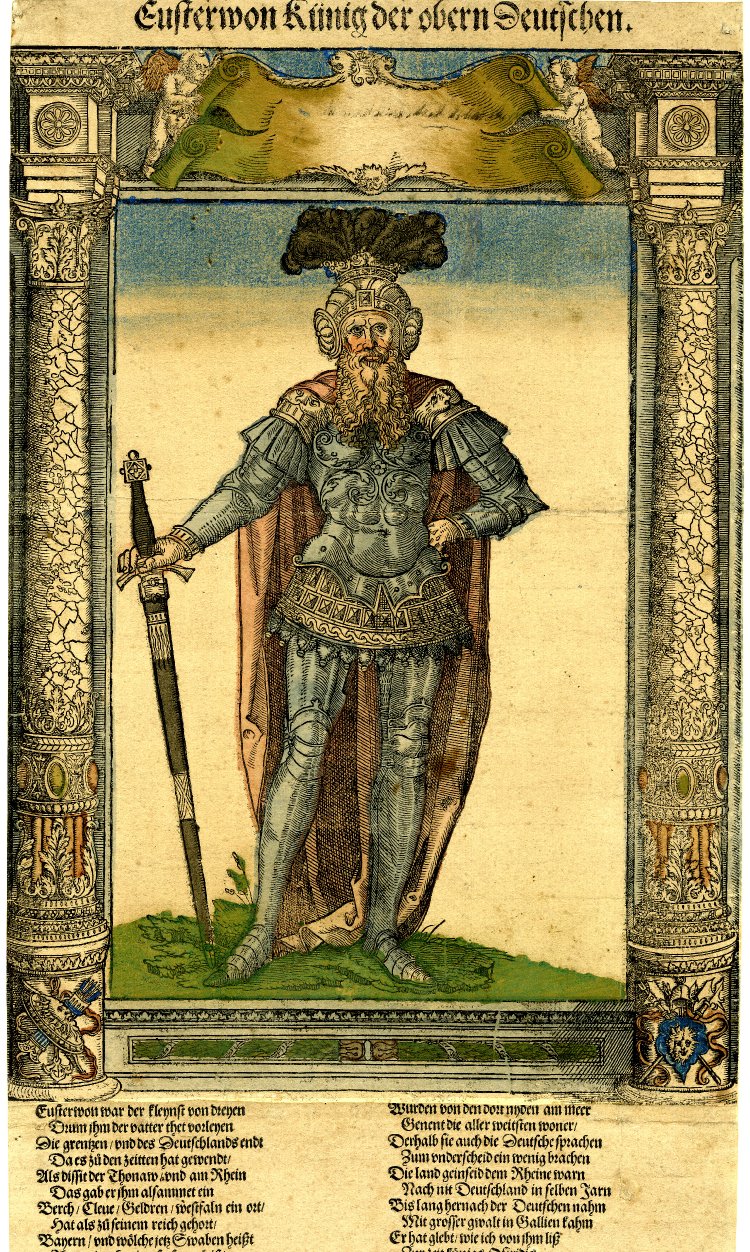 VI. Marsus, King of the Netherlands. 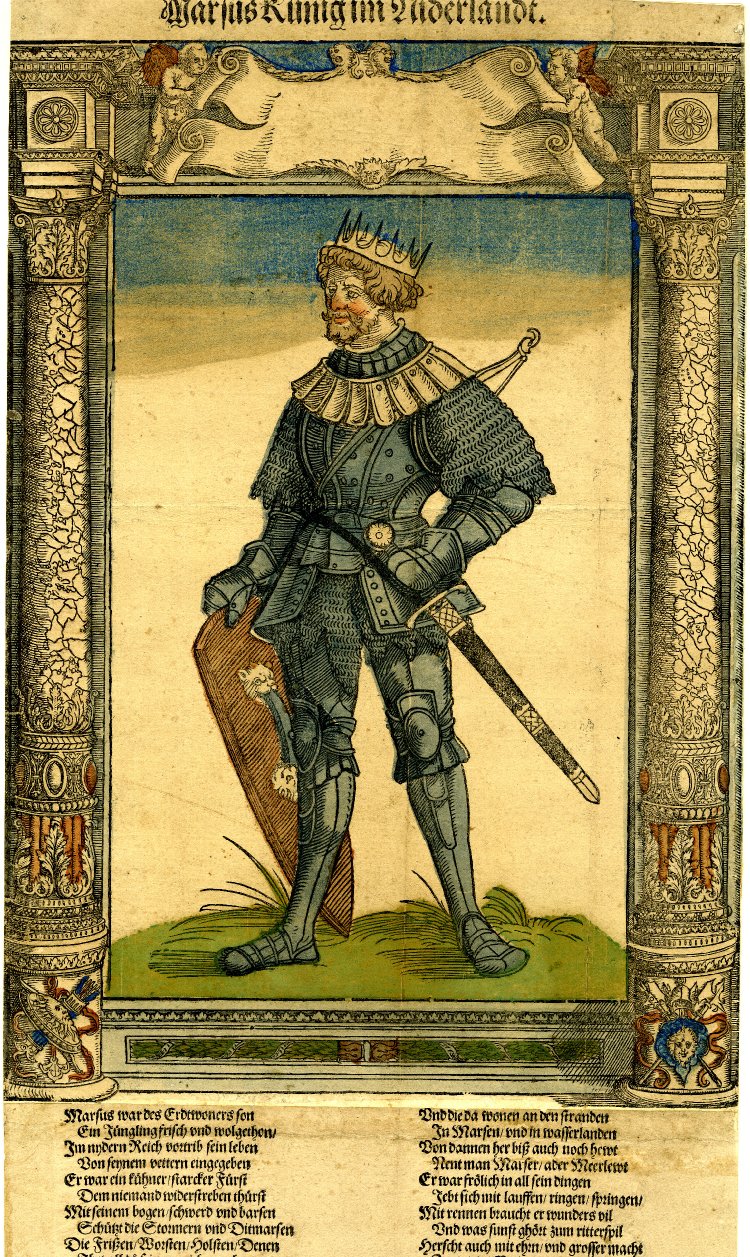 |
|
VII. Gambrivius, King in Brabant, Flanders 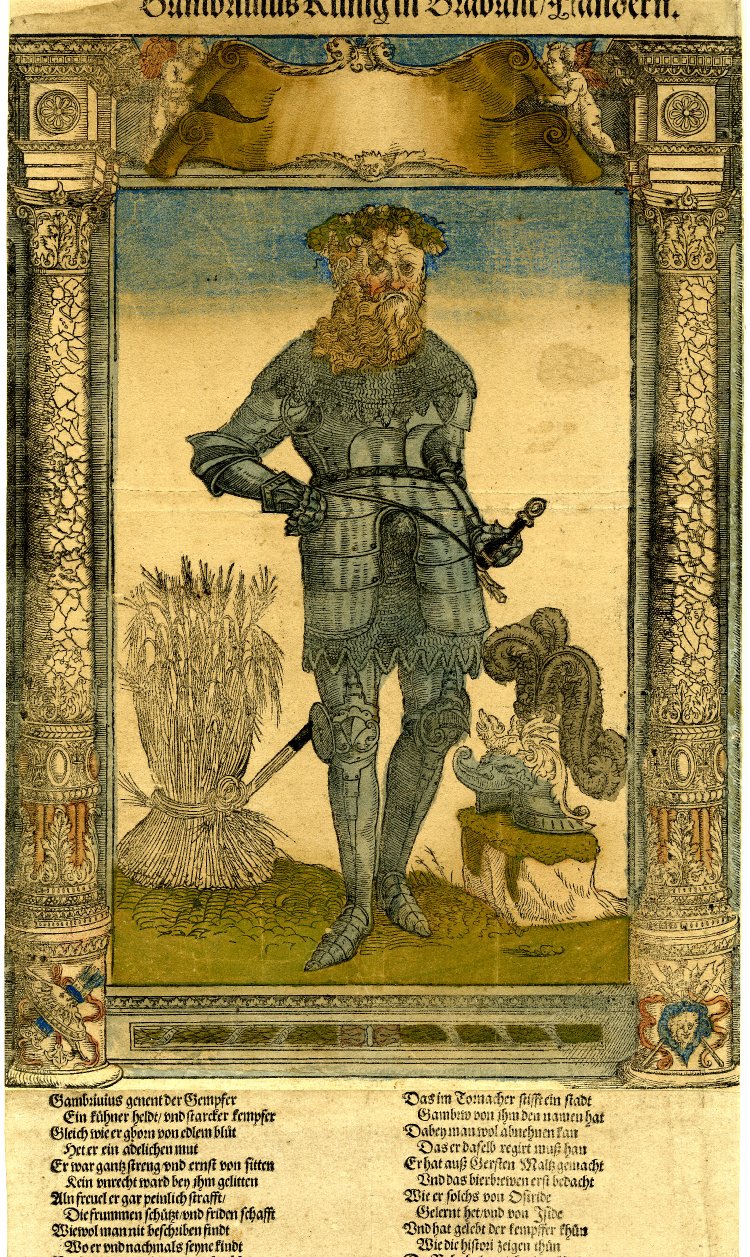 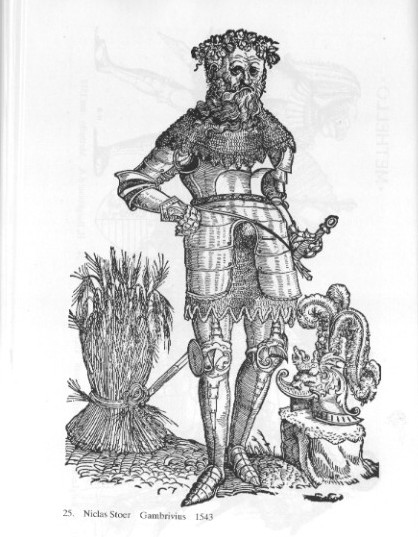 The illustration, printed by Hans Guldenmundt, shows a fully harnessed king with hops on his head, a helmet in his hand and a bundle of barley behind him. It’s beer king Gambrinus, only the crown and the jug of beer are still missing. And of course the corruption from the v (Gambrivii) into an n in his name still had to be adopted generally. However, by 1568 rhetoric Marcus van Vaernewijck from Gent was using exactly that spelling Gambrinus. Where does this figure come from? To find the answer we must go back all the way to Roman Antiquity. In about the year 98 AD senator Tacitus wrote a short history of the Germans, a primitive people living north of the Rhine and the Alps. Actually it isn’t such a long work, no more than 15 pages if you print it. On the origin of the Germans, he claims that they worshipped a god called Teuto and his son Mannus as their oldest ancestors. Then, it says: To Mannus they assign three sons, from whose names, they say, the coast tribes are called Ingaevones; those of the interior, Herminones; all the rest, Istaevones. Some […] assert that the god had several descendants, and the nation several appellations, as Marsi, Gambrivii, Suevi, Vandilii, and that these are genuine old names. The Gambrivians (‘Gambrivios’), of which
Tacitus says they didn’t exist, are elsewhere only mentioned in
passing by Greek scientist Strabo in his encyclopaedic
work Geographia from the early first century, |
|
VIII. Suevus, A Chief of All Suevi 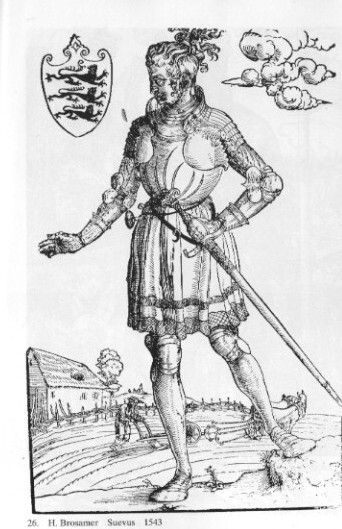 |
|
IX. Vandalus, King of the Wends 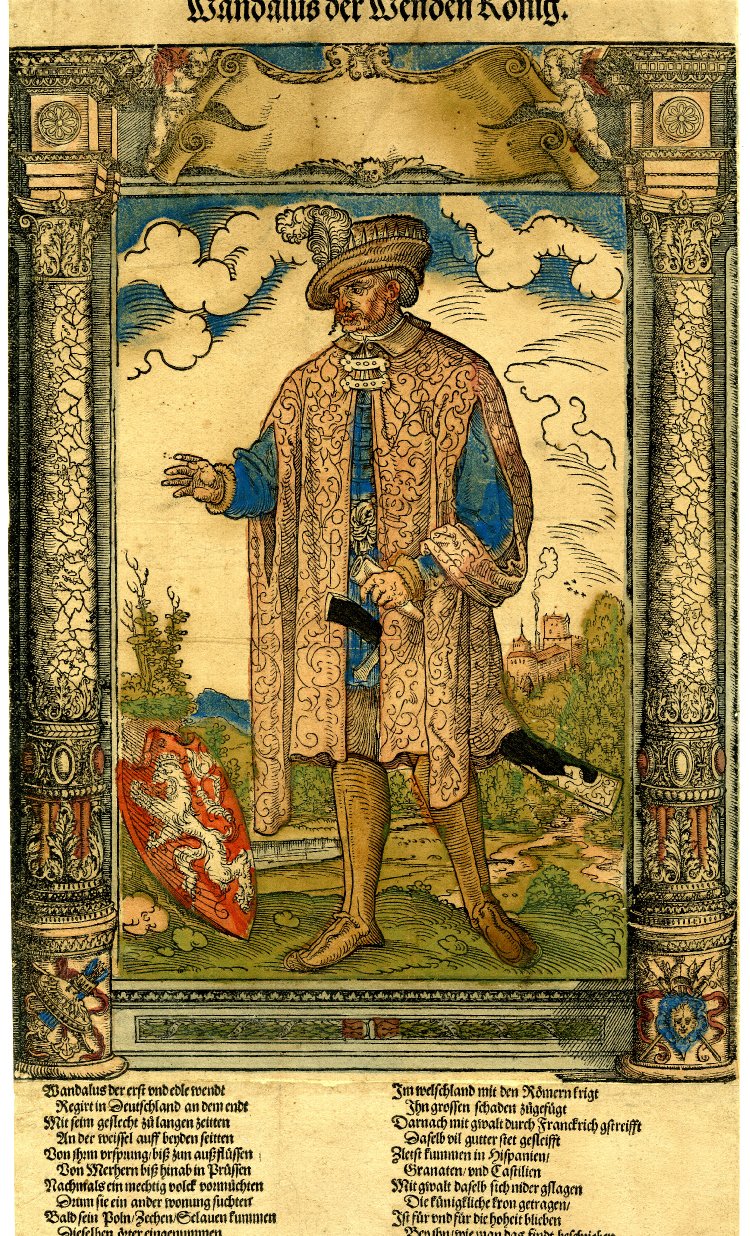 XI. Ariouistus, A King of All Germans 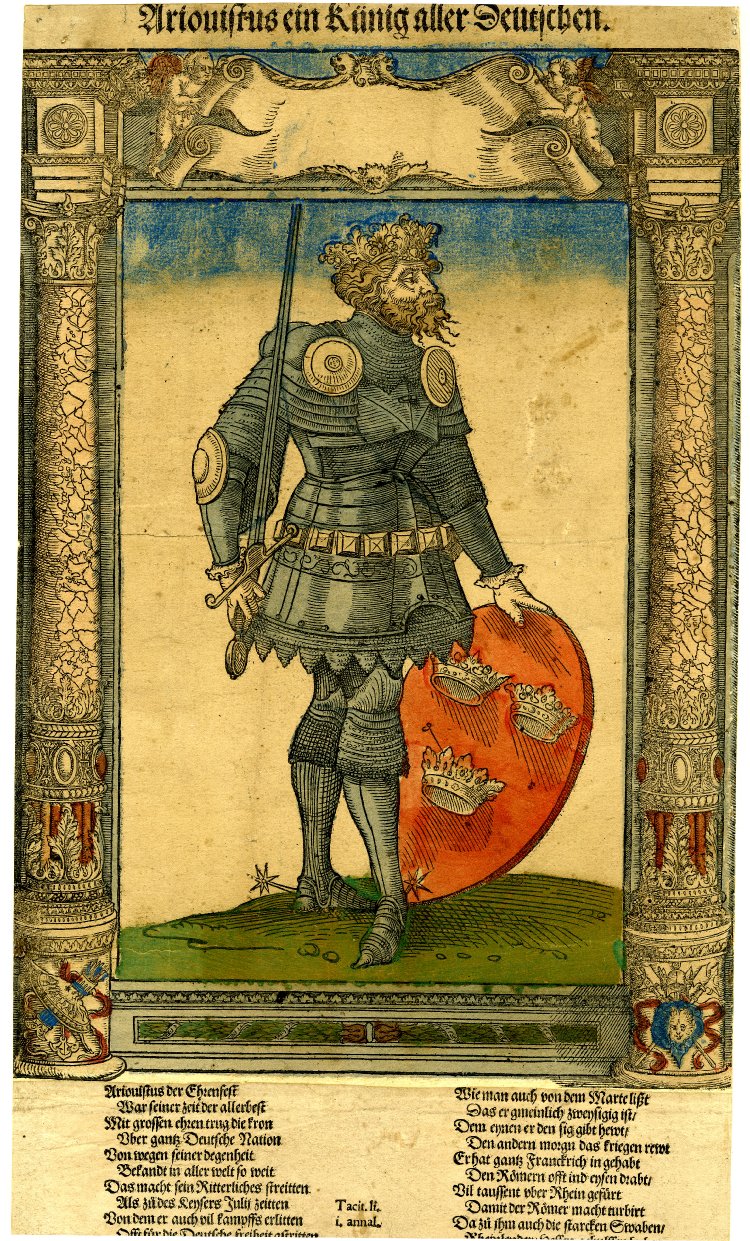 |
|
XI. Arminius (Hermann), A Prince Among the Saxons 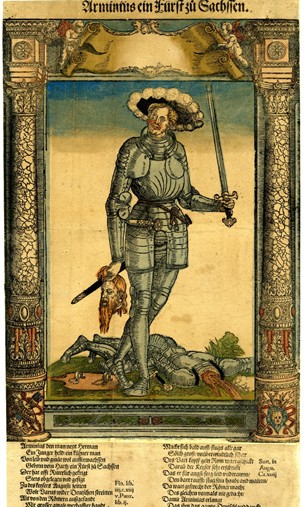 XII. Charlemagne, The First German Kaiser 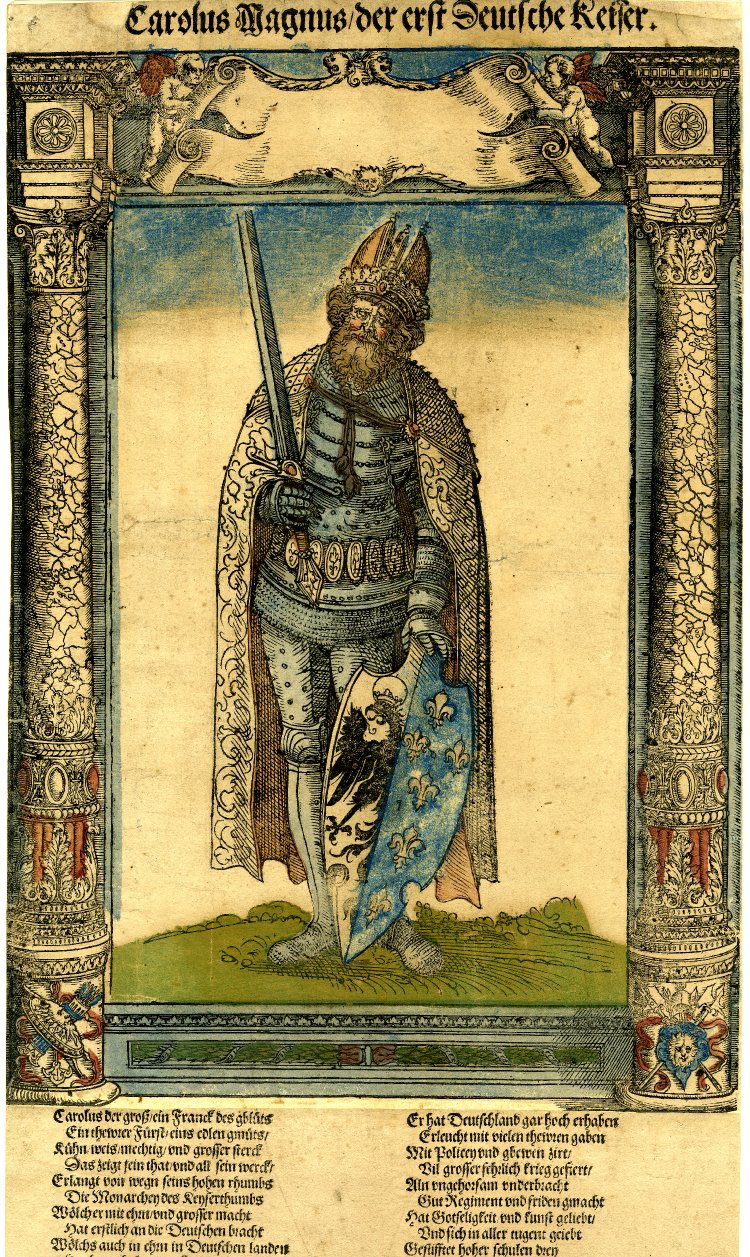 |
[POPULAR RETELLINGS]